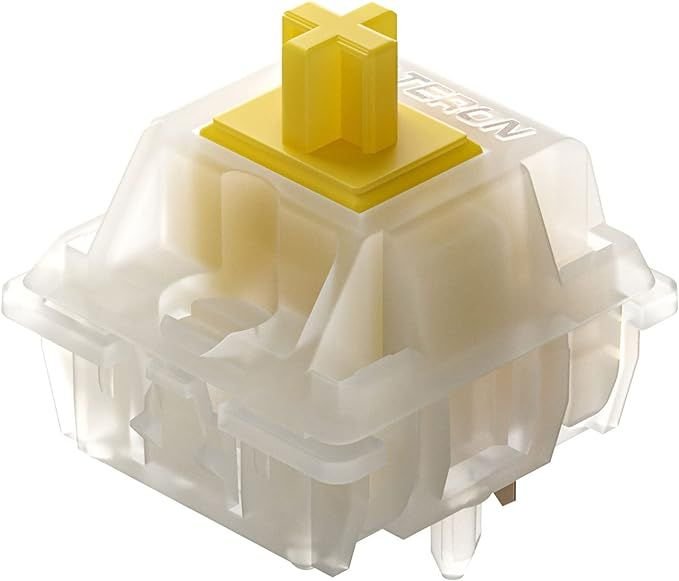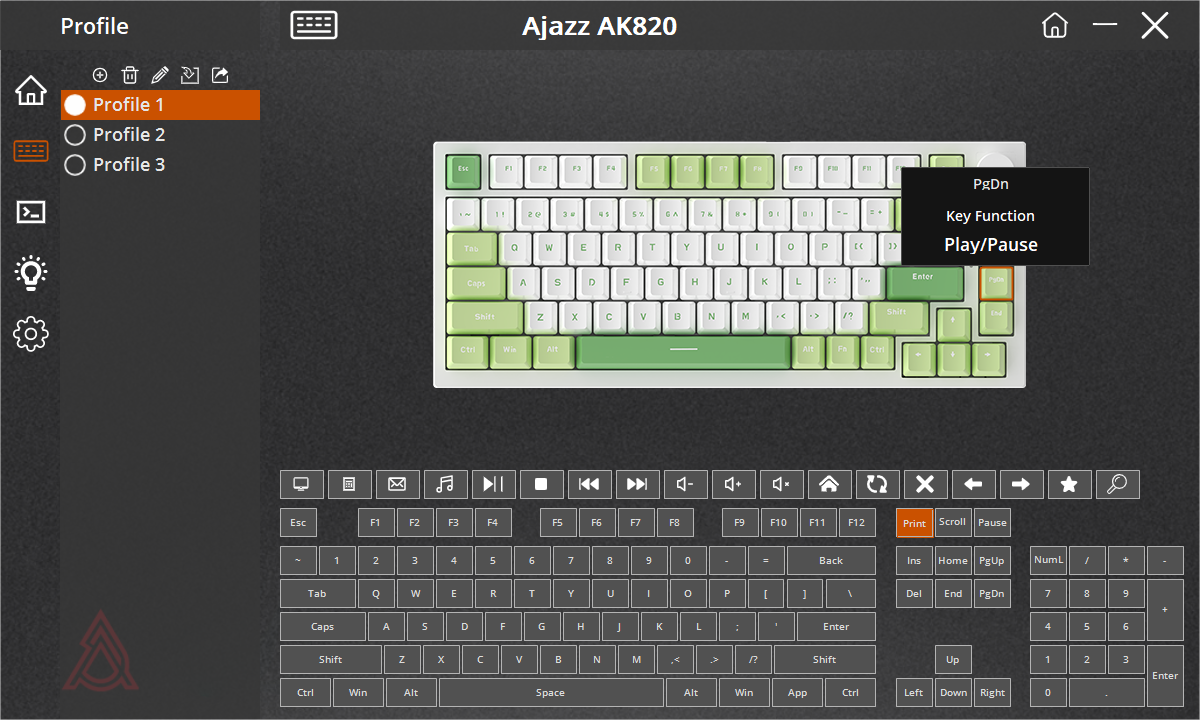Summary
- Just because a mechanical keyboard is popular doesn’t make it the right one for you.
- You can often fix how a keyboard sounds, looks, and feels by swapping switches, lubing the stabilizers, doing mods like sound-dampening foam, and replacing keycaps.
- Perhaps a traditional mechanical keyboard isn’t the right fit for you. Consider trying a low-profile mechanical keyboard, a membrane with scissor switches, or even an electro-capacitive model.
Let me set the scene: You’ve heard mechanical keyboards are the ultimate upgrade for typing and gaming, so you went ahead and bought one. But instead of feeling amazing, it’s been nothing but a letdown. So, what went wrong with your new keyboard?
You Bought the Wrong Keyboard
It’s easy to be misled into thinking that just because a mechanical keyboard is popular or expensive, it must be objectively good. The truth is, a keyboard’s feel, sound, and aesthetics are highly personal. So it’s not just possible, but likely, that a keyboard beloved by many is disliked by others.
For example, the switches inside the keyboard are the single most important component. If your keyboard doesn’t feel or sound the way you want, chances are the switches aren’t the right fit for you.

Maybe you were expecting a loud, clacky sound but accidentally got a thocky keyboard, or vice versa. Or perhaps you wanted smooth linear switches but accidentally bought one with rough-feeling, mushy tactiles. That’s an easy mistake to make if you’re just getting started with the hobby.
Take my experience with the Gateron Milky Yellow Pro V2 as an example. They’re a popular option, often recommended as a good, pre-lubed linear switch with a satisfying “thock” for both gaming and typing. While the sound was undeniably amazing, I’m a light typist and found the 50g actuation force too heavy, causing me to miss keystrokes all the time.

GATERON Milky Yellow Pro Switches
The Gateron Milky Yellow Pro switches are linear, pre-lubed, 5-pin MX mechanical switches. With an actuation force of 50g, they’re ideal for budget-conscious gamers and typists who prefer a medium switch that’s slightly heavier than a typical red switch.
Another good example is gaming keyboards. With matte keycaps, flashy RGB everywhere, and gamery fonts, they certainly fit the aesthetic of many gamers, but everything else is optimized around gaming rather than typing. For example, Hall Effect switches are optimized for ultra-fast actuation and responsiveness, but generally aren’t the most satisfying to type on.
Also, many gaming keyboards use a non-standard bottom row layout with a larger Ctrl and spacebar, and smaller Alt and Windows keys. This layout can help in RPGs and FPS games, but it often makes it easier to hit the wrong key when typing or navigating Windows.
Speaking of ergonomics, perhaps the keyboard you bought uses a layout that doesn’t suit your preferences.
For instance, tenkeyless, 75%, and 60% layouts are popular for removing “extra” keys to make more room for your mouse. But if you bought a keyboard without an F-row or numpad and find yourself missing them in daily use, or if the layout just feels too cramped and uncomfortable, you won’t have a good time typing on it.
Build quality matters, too. If you’ve already spent a good amount customizing your keyboard with new switches and keycaps that suit you better, but still dislike it, maybe it was a bad keyboard from the start.
Worse, if you bought a $20 mechanical keyboard expecting a great experience, those usually have poor build quality combined with the worst keycaps and switches imaginable. I’ve tried a few cheap ones—while they’re fine for casual use, they won’t impress anyone expecting a true mechanical keyboard feel.
Software support is important as well. If the bundled program frequently malfunctions or ignores your custom settings, while a cheaper membrane keyboard from Logitech works fine even with third-party software, it’s a clear sign that the manufacturer has cut corners to keep the price down.

What You Can Do to Fix the Feel
Assuming the keyboard is hot-swappable, the first thing you should consider is replacing the switches. Think about what you like and dislike about your current switches, and look for a switch that sounds like it could be a fitting replacement.
Using my earlier example of buying Gateron Milky Yellow Pros, I learned that while I loved the thocky sound, I wasn’t a fan of the heavy 50g actuation force. Compared to Cherry MX Reds at 45g, I knew I could go even lighter.
So, I switched to the very light 35g Akko Dracula switches on the same Ajazz AK820 Pro keyboard, and the difference was immediately noticeable. However, just because 35g is great for me doesn’t make it objectively the right target for you. It’s actually too light for most people and can cause many typos and accidental ultimate ability triggers in games, making those switches frustrating to use.

Ajazz AK820 Pro
The Ajazz AK820 Pro is a gasket-mounted mechanical keyboard with pre-lubed switches and PBT keycaps. It supports 2.4GHz, Bluetooth, and wired modes, and it has a built-in TFT screen that can display GIFs.
The point is, you need to learn more about your preferences before buying a new set of switches. While I could recommend getting a switch tester, most of them are so expensive that it makes more sense to buy a whole set and resell it if you don’t like it. Alternatively, you could visit a local PC store to test out keyboards and note which switches you prefer.

But what if you already like how the switches feel and sound, but they’re just a bit scratchy, or you want to improve them a little? In that case, consider hand-lubing them with Krytox lube. Admittedly, it’s a finicky and time-consuming process, but you only have to do it once, and it’s almost guaranteed to improve the keyboard. The same goes for lubing the stabilizers (though that’s much easier).
If you have a Hall Effect gaming keyboard with soldered switches, consider adjusting the actuation point in the keyboard’s companion app. I’ve found that my SteelSeries Apex Pro TKL became a solid typing keyboard after setting the actuation point to 1.6–1.8 mm.

SteelSeries Apex Pro TKL Wireless Gen 3
- Brand
-
SteelSeries
- Wireless
-
No
The SteelSeries Apex Pro TKL Wireless Gen 3 is a high-end gaming keyboard equipped with OmniPoint 3.0 Hall Effect switches that allow for near-instantaneous response times. It supports Rapid Tap to help FPS gamers with strafing, Rapid Trigger that dynamically adjusts reset points, and Protection Mode, which protects against accidental inputs.
The keyboard also has an OLED display that allows you to adjust settings on the fly or display important information.
If the keyboard itself doesn’t sound great, try a few simple mods, like adding sound-dampening foam and doing the tape mod. While they can’t turn a bad keyboard into an amazing one, they go a long way and are both cheap (or free) and easy enough to do yourself.
A simpler mod is replacing the keycaps. You’d be surprised how much of a difference they can make. For example, swapping from flat XDA-profile glossy ABS keycaps to taller, contoured OEM-profile PBT keycaps can greatly improve the keyboard’s ergonomics, sound, and overall feel. As a bonus, you can choose a different color and design to give your keyboard a more custom look.

Lastly, if the layout doesn’t suit you, I’m afraid that you’ll have to buy a new keyboard. If you already have switches and keycaps you like, consider getting a barebones unit to save some cash. If it’s just a number pad you’re missing, consider getting a standalone unit that you can use when you work and move it out of sight when gaming.
And if you’re serious about the numpad, you could treat yourself to a premium option like the 8BitDo Retro 18 Mechanical Numpad.
Maybe You’re Just Not Into Mechanical Keyboards

If you’ve already tried several different keyboards with unique switch and keycap combinations and still haven’t been wowed, there’s a good chance traditional mechanical keyboards just aren’t for you. Not everyone likes chunky keys and loud typing sounds, and that’s totally okay.
The first thing you should consider trying is a low-profile mechanical keyboard. You get all the benefits of a mechanical keyboard, but with significantly shorter keys and slimmer keycaps. They still sound and feel much better than traditional membrane keyboards.
If you’re after a keyboard that feels like a satisfying laptop one, you’ll be glad to know there are desktop keyboards that use the same scissor-switch mechanism. Some good examples are the Logitech Pop Icon Keys and the CHERRY Stream. They’re much cheaper than mechanical keyboards and offer a familiar feel and sound that’s a huge upgrade over traditional membranes.

Logitech POP Icon Keys
- Wireless
-
Bluetooth
- Backlight
-
No
Proudly express yourself and own your space with the Logitech POP ICON KEYS, a wireless Bluetooth keyboard with a bold aesthetic, comfy typing, and customizable Action Keys.
If you’d like something in between a traditional mechanical and a membrane keyboard, consider an electro-capacitive keyboard (also known as a Topre) like the NIZ Micro84.
These use a spring inside a rubber dome, giving a soft, cushioned feel and a deep “thock” sound unlike anything else on the market. The only downside is that they tend to be expensive because they’re a niche product many people don’t even know exists.
The world of mechanical keyboards is rich and varied, so it’s easy to end up with one you don’t like. The good news is that once you own a keyboard, you can build from there—learn your preferences, then either buy one that better suits you or modify your current board into a custom keyboard you’re guaranteed to love.


